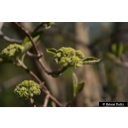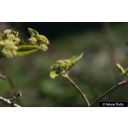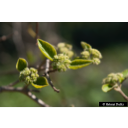Useful information about the taxon (species, subspecies, variety...)
Viburnum lantana L. 1753
Viburnaceae
(APG IV)Taxon concept: The Plant List (2014), version 1.1
Viburnum lantana L. - Accepted: Viburnum lantana L. bei Oberdorfer 2001; Familie: Adoxaceae (APG III)Viburnum lantana L. - Accepted: Viburnum lantana L. bei Zander 2008; Familie: Caprifoliaceae (Zander 2008)Viburnum lantana L. - Accepted: Viburnum lantana L. bei The Plant List (2014), version 1.1; Familie: Adoxaceae (APG III)Viburnum lantana L. - Accepted: Viburnum lantana L. bei Oberdorfer 2001; Familie: Viburnaceae (APG IV)Viburnum lantana L. - Accepted: Viburnum lantana L. bei Schmeil-Fitschen 2019; Familie: Adoxaceae (Schmeil-Fitschen 2019)Viburnum lantana L. - Accepted: Viburnum lantana L. bei Rothmaler 2011; Familie: Adoxaceae (Rothmaler 2011)Viburnum lantana L. - Accepted: Viburnum lantana L. bei Plants of the World Online; Familie: Viburnaceae (APG IV)Viburnum lantana L. - Accepted: Viburnum lantana L. bei BfN Checklist Flora DE; Familie: Viburnaceae (APG IV)Viburnum lantana L. - Accepted: Viburnum lantana L. bei World Flora Online - APG IV (Angiosperms); Familie: Viburnaceae (World Flora Online - APG IV (Angiosperms))
- Color of flower
- white
- Life form
- woody, shrub
Erhardt, W., Götz, E., Bödeker, N. & Seybold, S. (2008): Der große Zander. Enzyklopädie der Pflanzennamen. Band 2. Arten und Sorten. Eugen Ulmer KG, Stuttgart (Hohenheim), 18. Aufl., 2103 S.; Haider, M. et al. (2005): Wildbienenkataster. See: https://www.wildbienen-kataster.de; Schick, B. & Spürgin, A. (1997): Die Bienenweide. Eugen Ulmer Verlag, Stuttgart, Auflage: 4., völlig neubearb. u. erw. A., 216 S. 978-3800174188.; The International Plant Names Index (2009). Published on the Internet http://www.ipni.org; Courtesy to IPNI, 2009. Exported from IPNI at date: 2009-09-22 20:17:51; Westrich, P. et al. (2018): Die Wildbienen Deutschlands.. Ulmer Verlag ISBN 978-8186-0123-2.;
Diese Webseite verwendet Google Maps, um Karten und Standorte von Pflanzen in den Hohenheimer Gärten anzuzeigen. Dadurch werden unter Umständen Daten an Google weitergeleitet, was mit einer Verarbeitung Ihrer personenbezogenen Daten verbunden sein kann. Die Datenschutzerklärung von Google finden Sie hier: Datenschutzerklärung von Google
| Sex | Standort | Accession number | Planting year | Donation | IPEN | Lat. | Long. |
|---|---|---|---|---|---|---|---|
| Parzelle L | EG-L-091-13943 | 1938 | XX-0-HOH-EG-L-091-13943 | 48,7075488533 | 9,2085294835 | ||
| Parzelle X | LG-X-210-16126 | 2002 | XX-0-HOH-LG-X-210-16126 | 48,7059329378 | 9,2140276388 | ||
| Parzelle K | SP-KS-009-10556 | 2018 | XX-0-HOH-SP-KS-009-10556 | 48,710976432 | 9,2157466388 | ||
| Parzelle K | SP-KS-032-10577 | 2018 | XX-0-HOH-SP-KS-032-10577 | 48,7108872844 | 9,2152011877 | ||
| Parzelle L | SP-LS-015-10661 | 2021 | XX-0-HOH-SP-LS-015-10661 | 48,7107986301 | 9,2151998179 | ||
| Parzelle N | SP-NS-014-10738 | 2018 | XX-0-HOH-SP-NS-014-10738 | 48,7110927984 | 9,2161764923 | ||
| Parzelle N | SP-NS-042-10765 | 2018 | XX-0-HOH-SP-NS-042-10765 | 48,711445804 | 9,2165086991 |



